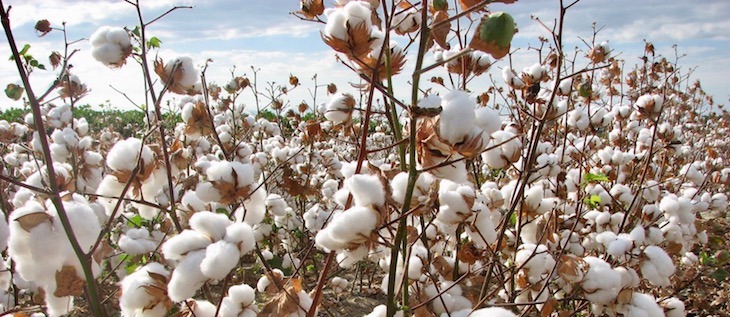Continuous rains imperil cotton crop especially in Northeast Arkansas
by September 25, 2018 6:16 pm 651 views

Heavy and constant rains are threatening the Natural State’s cotton crop. In early September, the U.S. Department of Agriculture’s National Agricultural Statistics Service revised the state’s projected cotton yield to 1,150 pounds per acre, approaching last year’s state record, with 485,000 acres planted.
But rainfall in the intervening weeks will likely affect both the yield and quality of those acres for the worse, according to the University of Arkansas System Division of Agriculture. The Northeastern section of the Arkansas Delta has been especially hit by repeated rains, according to the National Weather Service.
“I’m up in Jackson County, and we received 5-6 inches of rain in our area over the weekend,” said Bill Robertson, extension cotton agronomist for the Division of Agriculture. “And we — the entire Delta — aren’t done with the rain, either. There’s three or four things that could happen at this point and most of them aren’t good.”
While harvest effectively stalled for nearly all crops throughout much of the Delta over the weekend, cotton is particularly vulnerable to sustained moisture and delayed harvest at this point in the farming cycle. Cotton bolls that crack and are subsequently saturated with rainwater can become “hard-locked,” a condition in which the boll will never fully open and the lint becomes unsalvageable. Prolonged wet weather may plague otherwise harvestable lint with germinating seedlings inside the boll, which can degrade quality and result in steep discounts from buyers. More than 96% of were open as of Sept. 23, according to the USDA.
In Mississippi County, typically the state’s top cotton producer, Cooperative Extension Service staff chair Ray Benson said the potential damage to the cotton crop increases with each rain.
“We sit at the house and get sick every time we hear it pounding on the roof,” Benson said. “One rain, one event, one time, may be no big deal, but when it loosens it up, the boll is already exposed, it strings it out, then you get another rain event, it can actually knock the lint from the boll off onto the ground. You’re not going to be able to pick that back up and harvest it. This week is pretty critical, in my opinion,” he said. “We need it to quit raining, dry out, get sunny pretty soon, or I think we could see discounts in fiber quality.”
Benson said many cotton contracts settled in early September were in the 80-85-cents per pound. range. Discounts from discoloration of lint and degraded fiber quality could cost growers 5-7-cents a pound, he said.
“Let’s say you make a two-bale crop,” Benson said. “A nickel a pound could cost you $50 an acre. That’s a lot of money.”
The cotton harvest typically starts in mid to late September and runs through early November. There had been a lot of optimism about the cotton crop when the harvest season began. The USDA projections had been for a near record yield and thousands of more cotton acres were planted this year as compared to 2017. One early field in Craighead County yielded almost 1,600 pounds per acre, nearly 400 pounds above the projected yield, Robertson said.
The weather in the Delta will be a mixed bag in the coming days, according to NWS. There was a 40% chance of thunderstorms in region for Tuesday (Sept. 25) afternoon and night, and a slight chance of thunderstorms on Wednesday. The next couple of days there is little rain chance, but it will be cloudy which could slow the drying process. The next chance for rain is Saturday, the NWS predicted.
